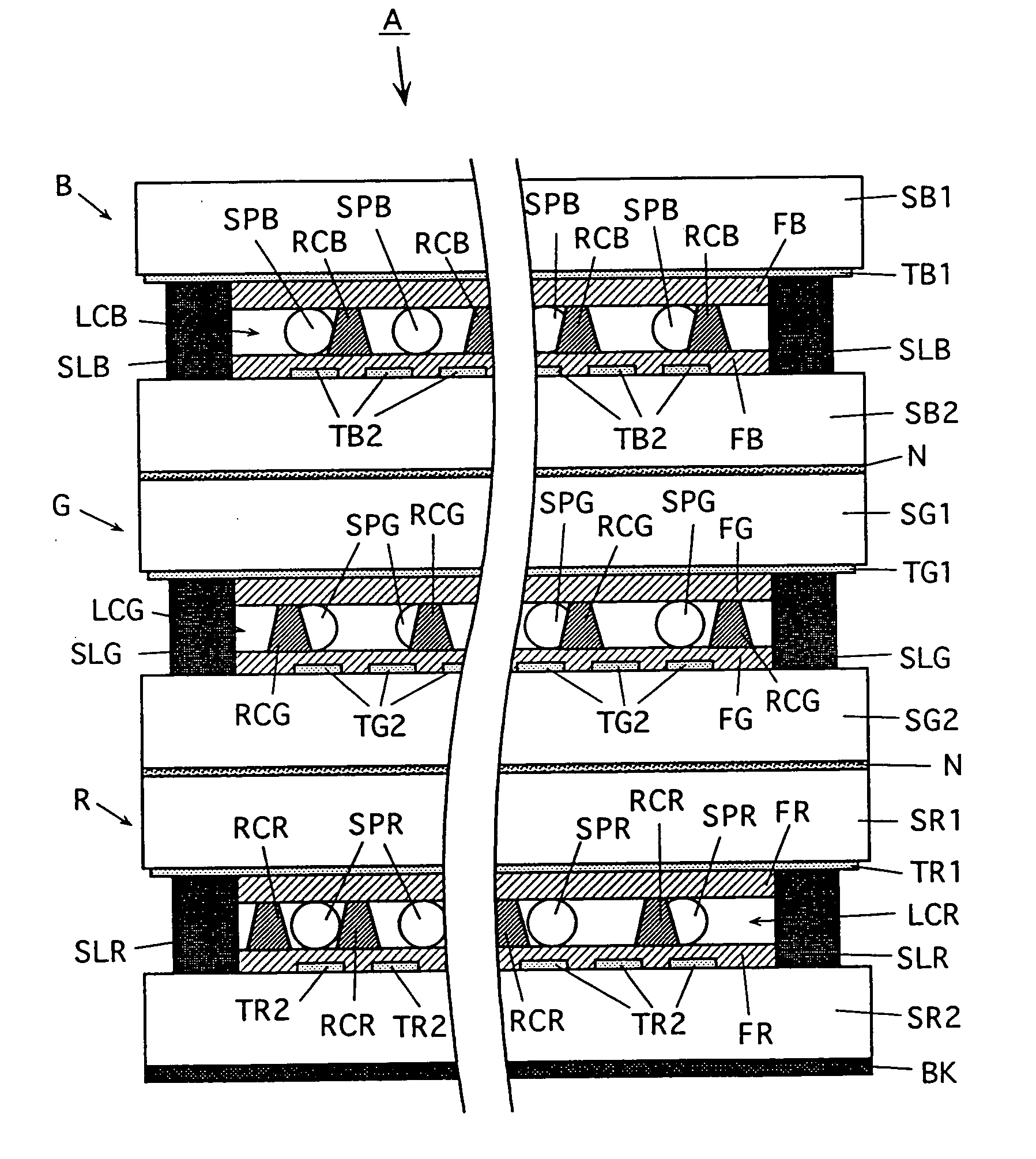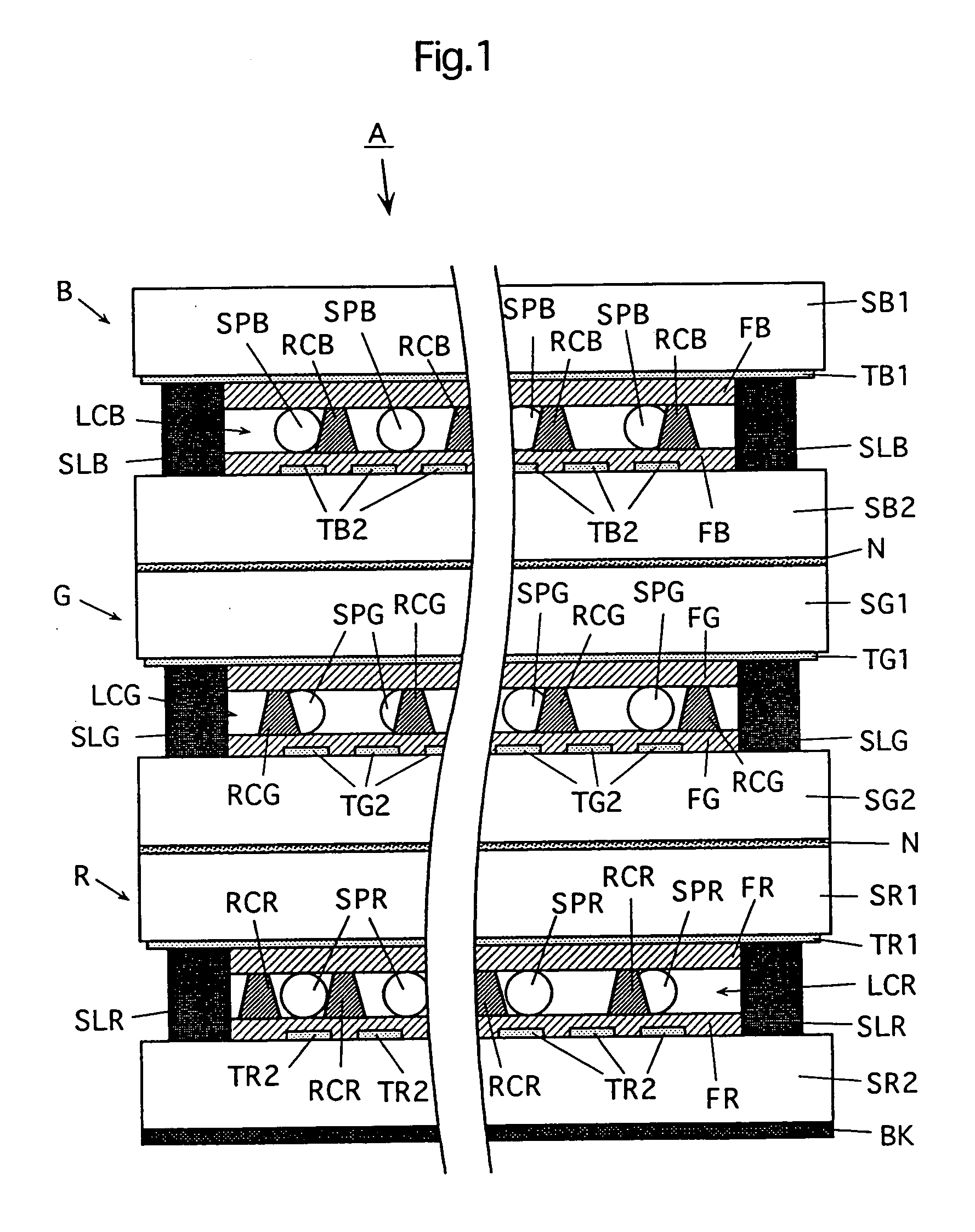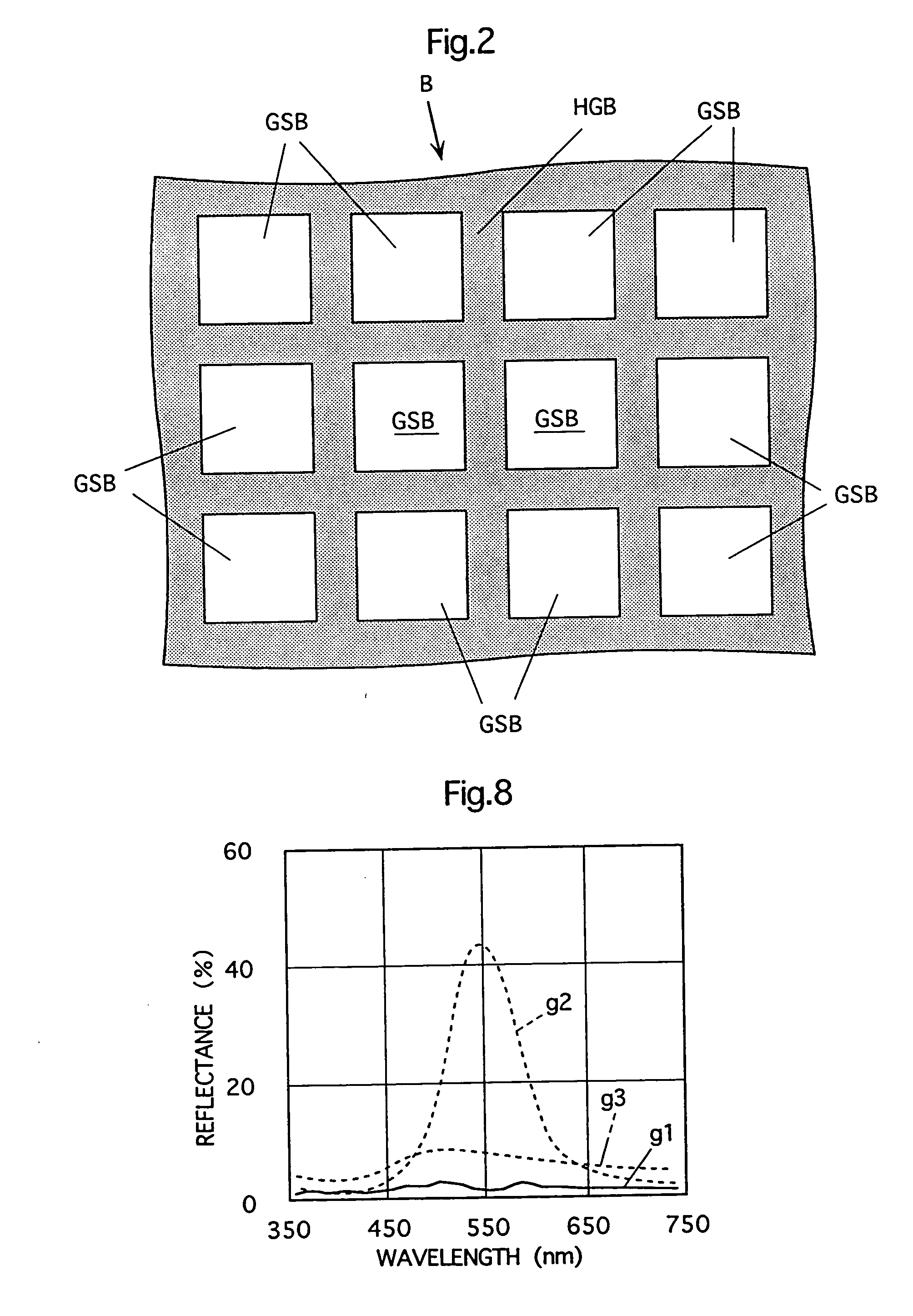Liquid crystal display element and method of producing the same
a liquid crystal display and liquid crystal technology, applied in the direction of liquid crystal compositions, instruments, chemistry apparatus and processes, etc., can solve the problems of cholesteric liquid crystals that are difficult to maintain the focal conic state, the distinctive feature of cholesteric liquid crystals, and the loss of bistability, etc., to achieve the effect of high quality
- Summary
- Abstract
- Description
- Claims
- Application Information
AI Technical Summary
Benefits of technology
Problems solved by technology
Method used
Image
Examples
example 1
This example is a three-layer liquid crystal display element of the reflection type using glass substrates, in which the rubbing processing is effected on a portion of each orientation film in each liquid crystal display element corresponding to the liquid crystal in the non-pixel region.
The liquid crystal display elements B, G and R were produced in the foregoing methods, and then were successively layered and bonded by the adhesives N.
In each element, 7059 glass substrate (manufactured by Corning Inc.) was used as each substrate. On each substrate, belt-like transparent ITO electrodes were formed in parallel with each other. The belt-like electrodes had a width of 300 μm, and were arranged with a pitch of 340 μm.
On all the surfaces of the substrates in contact with the liquid crystal, there were formed the orientation films made of polyimide AL8044 (manufactured by JSR Corp.). Rubbing processing was effected on a portion of each orientation film corresponding to the non-ima...
example 2
In each liquid crystal display element, the orientation film, which could be subjected to optical orientation processing, was formed on each of the substrate surfaces in contact with the liquid crystal, and the optical orientation processing was effected on the film portion corresponding to the non-pixel region. Structures other than the above were the same as those of the example 1.
The optical orientation was performed in the following manner. First, a photomask of the same configuration as the electrode pattern was arranged on the substrate, which was coated with polyimide, i.e., the orientation film material similar to that of the example 1, and was registered with the electrode pattern on the substrate. The above structure was irradiated with ultraviolet light. A lamp for emitting the ultraviolet light was a mercury lamp having a central wavelength of 365 nm. The emitting direction of the ultraviolet light formed 75° with respect to the normal of the substrate. The irradiatio...
example 3
A plurality of substrates of 0.2 μm in thickness, made of polycarbonate manufactured by Teijin Limited, were employed. Each substrate was provided with transparent belt-like ITO electrodes parallel to each other. Each transparent electrode had a width of 300 μm and was arranged with a pitch of 330 μm.
All the surfaces of each substrate in contact with the liquid crystal were provided with polyimide films AL8044 manufactured by JSR Corp., and the rubbing processing was effected in the following manner on the portion of the polyimide film in the non-pixel region.
First, positive resist of about 1 μm in thickness was uniformly applied to the polyimide film by a table coater. A photomask provided with holes of configurations corresponding to the electrode pattern was arranged on the substrate coated with the resist, and the exposure by the exposing device was performed. By the development after the exposure, the resist between the pixels, i.e., the resist in the non-pixel region was ...
PUM
| Property | Measurement | Unit |
|---|---|---|
| width | aaaaa | aaaaa |
| width | aaaaa | aaaaa |
| thickness | aaaaa | aaaaa |
Abstract
Description
Claims
Application Information
 Login to View More
Login to View More - R&D
- Intellectual Property
- Life Sciences
- Materials
- Tech Scout
- Unparalleled Data Quality
- Higher Quality Content
- 60% Fewer Hallucinations
Browse by: Latest US Patents, China's latest patents, Technical Efficacy Thesaurus, Application Domain, Technology Topic, Popular Technical Reports.
© 2025 PatSnap. All rights reserved.Legal|Privacy policy|Modern Slavery Act Transparency Statement|Sitemap|About US| Contact US: help@patsnap.com



